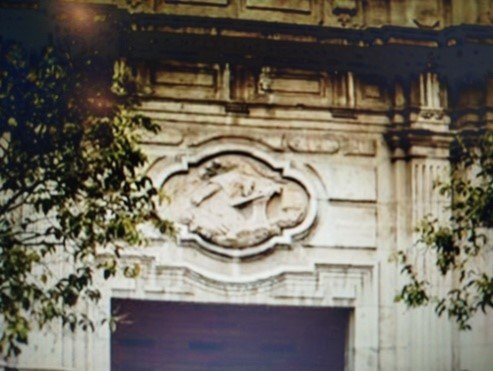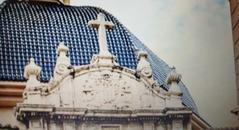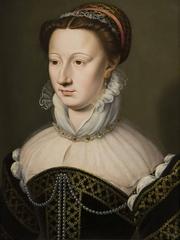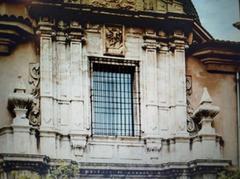
Museu De Belles Arts De València: Visiting Hours, Tickets, and History Guide
Date: 14/06/2025
Introduction
The Museu de Belles Arts de València stands as a cornerstone of Spain’s artistic heritage and is a top destination for art lovers and cultural travelers visiting Valencia. Officially established in 1913, but rooted in centuries of artistic tradition, the museum is located in the stunning Palau de Sant Pius V, a prime example of Valencian Baroque and Neoclassical architecture. Its collection spans from 14th-century Gothic masterpieces to vibrant 20th-century works by renowned Valencian and Spanish artists, making it the second most important art museum in Spain after the Prado in Madrid (Wikipedia).
The museum is conveniently located near the scenic Turia Gardens and the historic city center, making it an essential stop on any cultural itinerary. With accessible facilities, free or affordable admission, multilingual guided tours, and an engaging array of exhibitions and educational programs, the Museu de Belles Arts de València offers a welcoming environment for all visitors.
This guide provides essential information on visiting hours, ticketing, architectural highlights, collection must-sees, and practical tips to help you plan an unforgettable visit. For the latest updates, always consult the official museum website and trusted guides like Comunitat Valenciana and Northleg Guide.
Historical Background
Origins and Foundation
The Museu de Belles Arts de València was officially founded in 1913, but its roots extend further back, reflecting Valencia’s enduring dedication to the arts and education. The initial collection was formed from ecclesiastical holdings, private donations, and works transferred from other institutions. Over time, it has grown to encompass over 2,000 works, with a particular focus on paintings from the 14th to 17th centuries, underscoring the region’s rich artistic traditions (art-facts.com).
The St. Pius V Palace: Architectural Heritage
The museum is housed in the historic St. Pius V Palace, built between the late 17th and early 18th centuries. Originally serving as a seminary founded by Archbishop Juan Tomás de Rocabertí, the palace is a striking example of the confluence of Valencian Baroque and Neoclassical styles. Its cobalt blue dome is a recognizable feature on the Valencia skyline (Comunitat Valenciana).
Evolution of the Collection
Through state acquisitions, private bequests, and secularization transfers, the collection has expanded to include masterpieces by Gonzalo Pérez, Diego Velázquez, El Greco, Francisco de Goya, Pinturicchio, and Anthony van Dyck. The museum also houses works by Murillo, José de Ribera, Vicente López, and many others (Wikipedia).
Institutional Significance
The Museu de Belles Arts de València is highly regarded for its role in preserving and promoting the Valencian school of art, with works by Joaquín Sorolla, Ignacio Pinazo, and the Benlliure family (Comunitat Valenciana).
Location and Setting
Located at Carrer de Sant Pius V, 9, 46010 Valencia, Spain, the museum sits just north of the historic city center and beside the Turia Gardens. The location is accessible by foot, bicycle, or public transport, and its setting in a former 17th-century hospital adds to the visitor experience (cultural.valencia.es).
Architectural Significance
Layout and Features
The Palau de Sant Pius V is organized around a quadrangular college with a central cloister, blending Baroque order with Neoclassical simplicity. The temple, with its octagonal plan and blue-glazed dome, is a highlight of Valencian architectural tradition. The main façade, facing the Turia Gardens, is flanked by two imposing towers and adorned with decorative stonework and pediments (Cultural Valencia).
Adaptive Reuse and Restoration
After serving various civic functions, including as a military hospital, the building was restored and adapted into a museum. Modern interventions—such as climate control, improved lighting, and accessibility upgrades—have been sensitively integrated (Cultural Valencia).
Collection Overview and Must-See Highlights
Gothic and Renaissance Masterpieces
The museum’s Gothic collection includes 14th and 15th-century Valencian altarpieces and works by Jacomart and Joan Reixach, reflecting the region’s medieval artistry (livetheworld.com).
Renaissance and Baroque galleries showcase masterpieces by Paolo de San Leocadio, Juan de Juanes, Francisco Ribalta, and Jerónimo Jacinto de Espinosa.
Spanish Masters
The museum houses works by Velázquez, Murillo, Goya, and José de Ribera, with informative context on each artist’s place in Spanish and European art history (cultural.valencia.es).
Valencian Artists of the 19th and 20th Centuries
Extensive galleries are dedicated to Joaquín Sorolla, Ignacio Pinazo, Vicente López, Antonio Muñoz Degraín, and Cecilio Pla. Sorolla’s depictions of Mediterranean light are particularly celebrated.
Decorative Arts and Other Collections
Beyond paintings, the museum features drawings, engravings, sculptures, archaeological finds, photographs, and decorative arts, offering a comprehensive view of Valencian creativity (cultural.valencia.es).
Highlighted Works
- Juan de Juanes: “The Last Supper”
- Francisco de Goya: Portraits and Religious Works
- José de Ribera: “Saint Jerome”
- Joaquín Sorolla: Early Works
- El Greco: “Saint John the Baptist”
- Anthony van Dyck, Pinturicchio, and others: European Masters
Visitor Information
Admission and Visiting Hours
- General Admission: €10; discounts for students, seniors, groups; free for children under 10.
- Opening Hours: Tuesday to Sunday, 10:00–20:00; closed Mondays. Check the official website for updates and holiday schedules (livetheworld.com).
Accessibility
Fully accessible, with elevators, ramps, and accessible restrooms. Multilingual staff are on hand to assist (Valencia Life).
Guided Tours & Educational Programs
Offered in Spanish, Valencian, and English, with workshops, lectures, and temporary exhibitions enriching the visitor experience (cultural.valencia.es).
Amenities
- Museum Shop: Art books, prints, postcards, and local crafts.
- Café: Light meals and drinks with views of the Turia Gardens.
- Lockers: Secure storage for personal items.
Tips for Visitors
- Allow 2–3 hours for a thorough visit.
- Photography is permitted (no flash or tripods).
- Early morning or late afternoon visits are less crowded.
- Combine your visit with nearby attractions like Turia Gardens and the Valencia Cathedral.
Cultural Insights and Community Role
The museum is a symbol of Valencian cultural identity, tracing its origins to the Real Academia de Bellas Artes de San Carlos (1768). It frequently hosts community events, lectures, and collaborations, keeping it at the heart of local cultural life (cultural.valencia.es).
Nearby Attractions
- Turia Gardens: Urban park for walks and cycling.
- Valencia Cathedral: Iconic religious site nearby.
- Historic City Center: Medieval streets, cafes, and markets.
Frequently Asked Questions (FAQ)
Q: What are the current visiting hours?
A: Tuesday to Sunday, 10:00–20:00; closed Mondays. Always check the official website for updates.
Q: How much are tickets?
A: General admission is €10, with discounts for students, seniors, and groups. Children under 10 enter free.
Q: Is the museum accessible?
A: Yes, with elevators, ramps, and accessible restrooms.
Q: Are guided tours available?
A: Yes, in Spanish, Valencian, and English.
Q: Can I take photographs?
A: Yes, but without flash or tripods.
Q: What else can I visit nearby?
A: Turia Gardens, Valencia Cathedral, and the historic city center.
Enhance Your Visit
Explore a virtual tour and use the interactive map on the official website to plan your visit.
Conclusion
The Museu de Belles Arts de València offers a captivating journey into Spain’s artistic legacy, set within a beautifully restored Baroque palace. Its vast collections, accessible services, and prime location make it a highlight for any visitor. Plan your visit, check for current exhibitions, and download the Audiala app for exclusive content and updates.
For complete details, visit the official museum website.
Sources and Further Reading
- Museu de Belles Arts de València Wikipedia
- Comunitat Valenciana - Fine Arts Museum Valencia
- Art Facts - Museu de Belles Arts de Valencia Paintings
- Cultural Valencia - Museu de Belles Arts de Valencia
- Northleg Guide - All You Need to Know Before Visiting Valencia
- Live The World - Valencia Fine Arts Museum
- Valencia Life - Museu de Belles Arts Accessibility













































